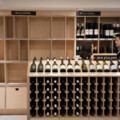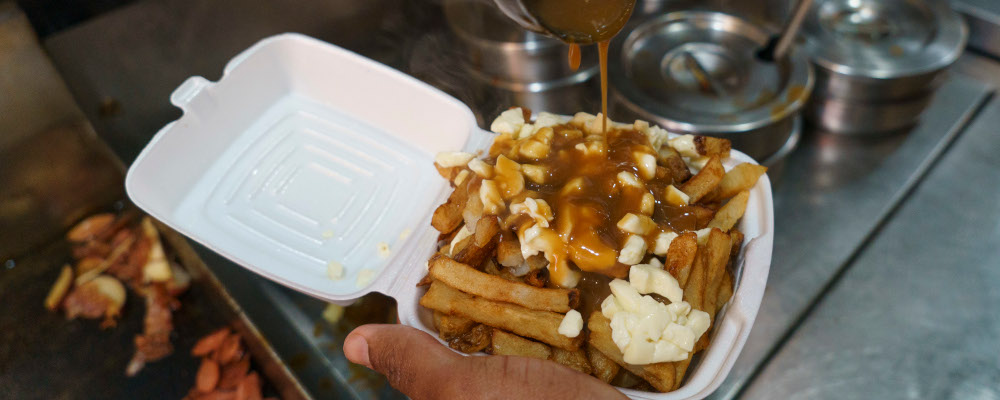An apologia, not an apology: There is no way to write about food and drink without annoying someone. No matter how much you love your favourite food writers—Charles Baker, Jay Raynor, Jonathan Gold, Elizabeth David, A.A. Gill, Anthony Bourdain—I guarantee that someone else finds them gratingly pretentious, twee, smug, or macho. Bad food writing primps and simpers over its subject, but worse are critics who refuse to take the topic seriously.
I will warn you upfront that this piece offers the worst of both worlds: a soupçon of the euphuistic school of culinary criticism with some lumps of “it’s just a f*cking burger, man” grub talk. I don’t apologise. Each entry is an honest reaction to something that soothed, stroked, or smacked my palate, as the occasion demanded. Some would have been extraordinary under any circumstances, while others were (as true delights usually are) a matter of the right time and place. Each was memorable in its own way.
1. First, chronologically, was the Eccles Stout, from St John. St John was my local restaurant when I lived in London 20 years ago, and I would often end dinner at the bar with an Eccles Cake, a wedge of crumbly Lancashire cheese, and a glass of madeira. This beer combined the dense, dark raisiny richness of the cakes with the creaminess of a stout. Although the cakes are a year-round treat, the currants, citrus, nutmeg, clove, and allspice make the beer more Christmassy than a drunk uncle singing both parts of “Fairytale of New York” just a little too loudly at the kid’s table. I’m already looking forward to this year’s batch.
2. Jambon de la Petite Bourgogne. Any year I visit Vin Papillon in Montreal, this dish will have a place on this list. As simple as food comes, and simply as good as it gets. Thinly sliced ham, ribbons of cheddar, and a drizzle of browned butter. The first time I had it I was convinced there was no better dish on any menu in the country, and almost a decade later I’ve yet to be proved wrong.
3. Poutine. A late-morning departure from Montreal to Quebec City meant arriving in the outskirts of the capital absolutely famished. A stop at Casse Croute Chez Micheline cured that. Is it the best poutine in the province? I have no idea (and I’ve had a lot), but on that day it was everything poutine should be. Crisp golden fries, curds squeakier than motel bedsprings, drowned in a glossy smooth pepper gravy. It’s hard to imagine something lumpy and brown being beautiful, but it genuinely was.
4. Bollinger Grande Année Rosé, 2004. I don’t remember where or when I picked up a half case of this wine, but I’ve been rationing it with the parsimony of a cook in the 6th Army at Stalingrad. I popped a bottle this summer before a dinner on the terrace of the Ranchmen’s Club in Calgary. Faintly oxidised, paler and dryer than you would expect, with a rich core of dry summer fruits. It must have evaporated in the summer heat, as every time I looked down my glass was empty.
5. I could have chosen half of the dishes on Pilgrimme’s summer tasting menu, but I’ll go for one described as “aged duck, west ham gold potato, galiano fig”. I don’t have the words to do the dish justice, so I’ll leave it to that laconic description and your imagination. It helped that it was the triumphant final savoury course of a menu that somehow, impossibly, gets better with every visit. What an exclamation point, like the ecstatic bell-ringing climax of Mahler’s 5th… but with aged duck.
6. There are passing few advantages to modern life that surpass the ubiquity of great cheese, but this year’s stand out was an old workhorse: Godminster’s Bruton Beauty Cheddar, served after a lunch at Winchester’s Chesil Rectory. The butter-smooth, buccal-tingling Bruton Beauty proves that good food doesn’t have to be expensive or distant.
7. I will take the fact that I had the 1983 Palmer at a special tasting of the Oxford University Blind Tasting Society as an excuse to go over-the-top wine geek on this one. All the classic Left Bank notes were still there—black currants, brambles, sweet decaying leaves, cedar cigar box—but with a mature Keatsian “mellow fruitfulness,” plus that ethereal Margaux perfume, like dried violets crushed between white crinoline. If I had to go full Brideshead, I’d call her an ancien regime courtesan confident in her allure and unashamed of her price.
8. The Wes Anderson-designed Bar Luce at Milan’s Fondazione Prada looks much better on Instagram than in person, but after walking an hour in the sun almost anywhere with a roof would have felt like an oasis, even this fey re-imagining of a mid-century Milanese cafe. I ordered a birra alla spina (too parched to ask what brand it was), followed by the house aperitivo, followed by another birra. I defy you to find anything more refreshing on a humid day than Giass gin, Bitter Campari, orange bitters, Rabarbaro Zucca, and Fernet Quaglia, stirred over ice and drunk between two cold Italian pilsners served in perspiring glasses.

9. There had to be a place on the list for my mum’s extraordinary home cooking, and this year I’m going with a classic. Thick bloody slices of aged roast beef, teetering towers of Yorkshire pudding, sweet charred carrots and parsnips, and roast potatoes under a deluge of hot gravy, all lifted by the musty vinegar tang of pickled walnuts and a spoonful of sinus-clearing hot mustard. No London chophouse ever did it better.
10. The regular sushi is good enough to make Shokunin a regular Calgary haunt, but the wagyu “sushi” makes it unmissable. This fatty quintessence of beef on rice with a dab of wasabi melts, floods, and assaults the senses so completely that a second piece would be gross superfluity. Which, given the price, is just as well.
Finally, a special shout out to the humble cup of coffee. Not an americano, which is watery espresso, but the real thing: brewed black coffee. What would I do without it? Too many good ones to choose from this year, but some regulars were: Phil & Sebastian and DeVille in Calgary; the Marina Cafe and Hide + Seek in Victoria; and Brew, the Missing Bean, and Colombia Coffee Roasters in Oxford. Nine days out of ten, it’s the best and most important thing I put in my mouth, so it really deserves a category of its own.
Here’s to topping this list in 2024.
Recommended for You

Malcolm Jolley: The comfort of familiar favourites—or the fun of finding new wines?
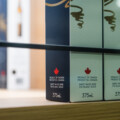
Malcolm Jolley: An ‘Elbows Up’ wine project everyone can get behind
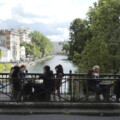
Malcolm Jolley: Need some summer wines? Look no further than the food-friendly, low-sugar sippers of the sunny Southern Rhône
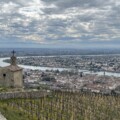
Malcolm Jolley: Need a date-night drink? French Northern Rhône wines are worth the investment
